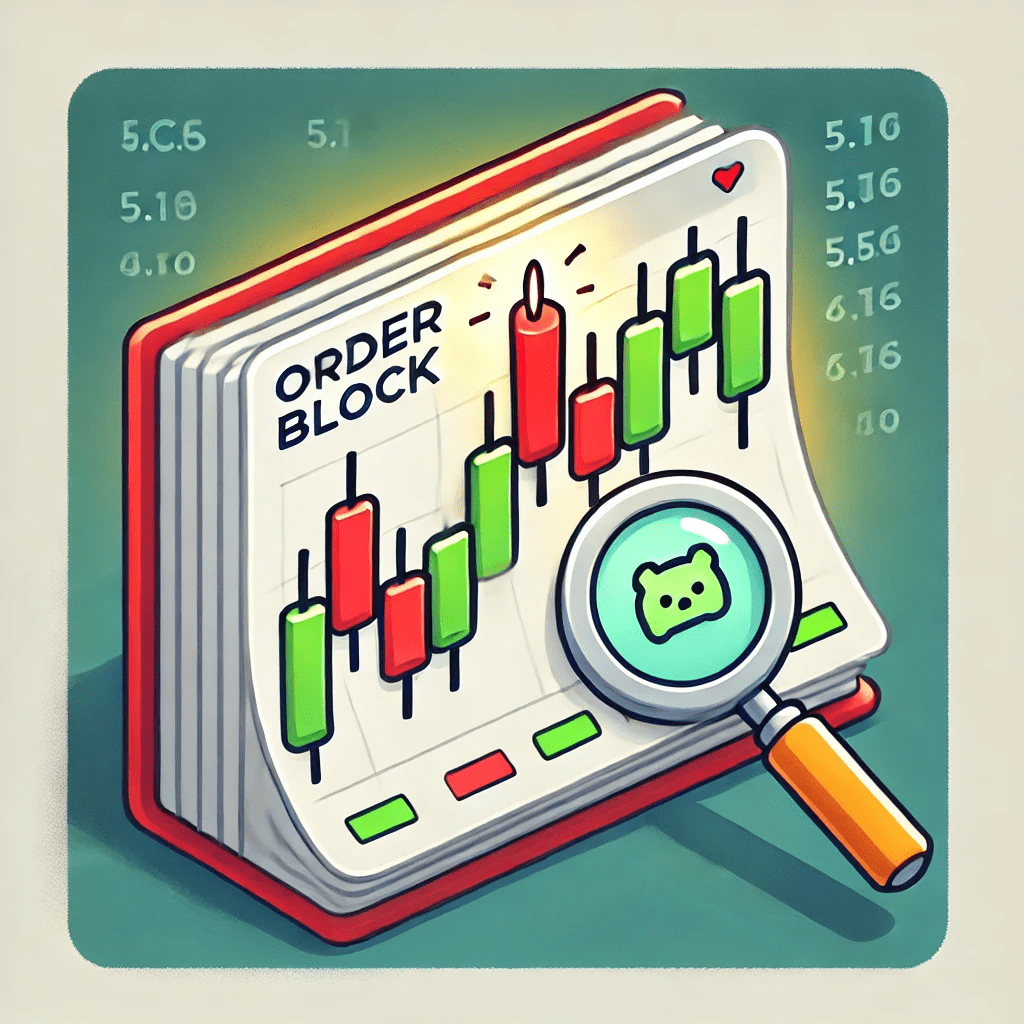ICT Order Block: The Most Famous PD Array
Table of Contents
Toggle
What Is an ICT Order Block?
An ICT Order Block is a Smart Money Concept (SMC) popularized by Inner Circle Trader (ICT). It refers to a specific type of price action level that represents areas where institutions, banks, and other large market participants have placed significant buy or sell orders.
Order blocks form when price consolidates before a strong directional move. This consolidation indicates that institutional players are accumulating or distributing positions. These levels are essential for traders who want to align with smart money flow rather than following retail trading patterns.
Why Are Order Blocks Important in Trading?
Order blocks are crucial because they reveal institutional activity. Unlike retail traders who rely on indicators, smart money trades based on liquidity, order flow, and key price levels. Order blocks show where these players are likely to:
- Enter positions.
- Rebalance their portfolios.
- Trigger price reversals.
By identifying ICT order blocks, traders can anticipate market moves and position themselves accordingly.
Types of ICT Order Blocks
There are two primary types of order blocks in ICT trading: Bullish Order Blocks and Bearish Order Blocks.
1. Bullish Order Block
A Bullish Order Block forms when a down candle (or series of down candles) precedes a strong upward move. This indicates that smart money has accumulated long positions during the consolidation phase.
Key Characteristics:
- The last bearish candle before a significant upward move.
- Price returns to this level before continuing higher.
- Acts as support when price revisits it.
Example:
If the market is trending upward, look for a bullish order block to provide a buying opportunity when price retraces to that level.
2. Bearish Order Block
A Bearish Order Block forms when an up candle (or series of up candles) precedes a strong downward move. This shows that smart money has entered short positions during the consolidation phase.
Key Characteristics:
- The last bullish candle before a significant downward move.
- Price revisits this level before continuing lower.
- Acts as resistance when price revisits it.
Example:
In a downtrend, look for a bearish order block to provide a selling opportunity when price retraces to that level.
How to Identify ICT Order Blocks on a Chart
To identify ICT order blocks, follow these steps:
- Look for Consolidation Before a Strong Move
Identify areas where price consolidates before making a strong upward or downward move. - Mark the Last Candle Before the Move
For bullish order blocks, mark the last bearish candle before the move. For bearish order blocks, mark the last bullish candle. - Wait for a Price Retracement
After the initial move, wait for the price to return to the order block. This is often where smart money re-enters the market. - Watch for a Reaction
Look for price action confirmation (such as a break of structure) before entering a trade.
How to Trade Using ICT Order Blocks
Here’s a step-by-step guide to trading with ICT order blocks:
Step 1: Identify the Trend
Start by identifying the overall market structure. Are we in an uptrend, downtrend, or range-bound market?
Step 2: Mark Key Order Blocks
Look for bullish order blocks in an uptrend and bearish order blocks in a downtrend. Mark these areas on your chart.
Step 3: Wait for Price to Return to the Order Block
Patience is key. Wait for the price to retrace to the order block rather than entering a trade immediately after spotting it.
Step 4: Look for a Reaction
When the price revisits the order block, watch for confirmation patterns, such as break of structure (BOS) or fair value gaps (FVGs).
Step 5: Enter the Trade
Once confirmed, enter your trade with a stop-loss placed beyond the order block and a take-profit set at the next key level.
Common Mistakes When Trading Order Blocks
- Entering Too Early
Many traders enter trades as soon as the price touches the order block. Always wait for price action confirmation before entering. - Ignoring Market Structure
Order blocks are most effective when they align with the overall market trend. Trading against the trend reduces your probability of success. - Not Considering Timeframes
Higher timeframes provide more reliable order blocks. Lower timeframes can produce false signals and noisy price action. - Poor Risk Management
Always use proper risk management. Place your stop-loss beyond the order block and calculate your risk-to-reward ratio before entering a trade.
Conclusion: Mastering the ICT Order Block
The ICT order block is a powerful tool for traders who want to align their strategies with institutional order flow. By understanding how and why order blocks form, you can improve your trade accuracy, avoid retail traps, and take advantage of smart money moves.
Incorporating order blocks into your trading strategy requires patience, practice, and a deep understanding of price action. Master this concept, and you’ll gain an edge in your trading journey.
Private Coaching
If you’re ready to take your trading skills to the next level and learn how to apply ICT concepts in real-time, book your free discovery session with me today! We’ll discuss your goals, create or assess your current trading system, and create a personalized plan for you to become a consistent and successful trader.
